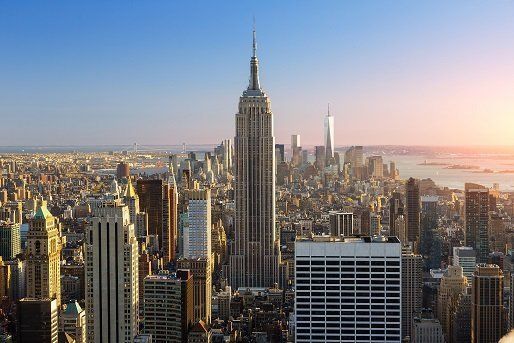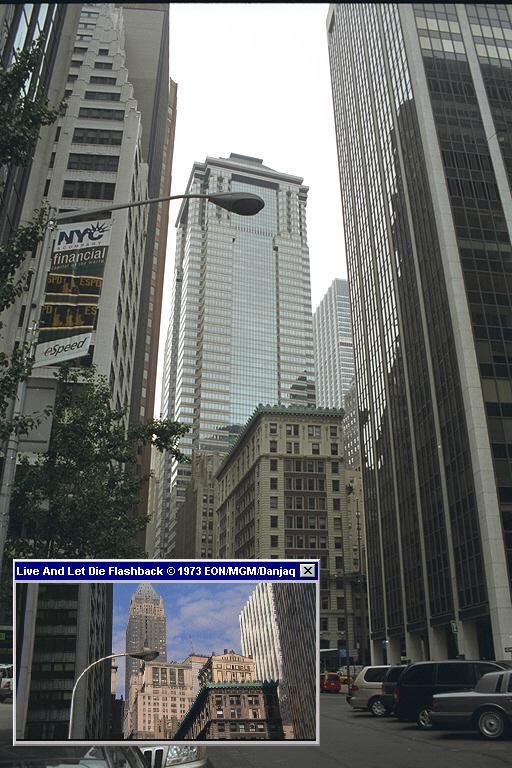
New York
The origin of the nickname “Big Apple” for New York is obscure. Some sources claim that it derives from the name of a jazz club in Harlem. There is certainly no superlative that does not fit this urban moloch at the north-eastern corner of the United States. New York is probably the toughest, most unsentimental city in America, but in spite of all its unsolved problems and inconsistencies it appeals to millions of visitors every year, who are attracted by its gigantic dimensions, its tolerant open-mindedness and its roaring vitality.
Below is part of the story The Big Apple, as featured in full in the travel guide.
Below is part of the story The Big Apple, as featured in full in the travel guide.
New York consists of the five boroughs Staten Island, Queens, Bronx, Brooklyn and Manhattan. In 1524 the Italian seaman Verrazano explored the area. The Dutch founded New Amsterdam in 1624 and their countryman Peter Minuit bought the island of Manhattan from the Indians for 24 Dollars in 1626. The English snatched the settlement from the Dutch in 1664 and renamed it New York. During the American War of Independence (1775-83) the city was a main battlefield. New York State became a member of the Union in 1788 as the 11th of the founding states. For about one year (1789-90) New York City was the capital of the USA. The Stock Exchange was founded in 1792. As a gift from the French people the Statue of Liberty was built in 1886. Another landmark, the Empire State Building was erected in 1931. Since 1952 the United Nations has had its headquarters in Manhattan. With its opening in 1973 the World Trade Centre became the highest skyscraper of the city. It was destroyed again in a terrorist attack in 2001. There are now more than 18 million inhabitants living in the area of Greater New York.

After the accident Bond telephones Felix Leiter. From the exterior of Leiter’s office we see only a very brief snap shot. It is hard to recognize, because the area has been pretty much rebuilt, but the picture was taken from South Street looking into Wall Street.
From here Bond follows the white Cadillac to Harlem, the African-American, Dominican and Latin neighbourhood north of Central Park. In the twenties and thirties, black culture blossomed in the dance, drama and music of Harlem. The Cotton Club was the place to hear Count Basie or Duke Ellington while Ella Fitzgerald and Louis Armstrong performed in the Apollo Theater. Bond pursues the mobsters to the Fillet-of-Soul-restaurant, the legal façade of their drug dealing. Because of all the difficulties the filmmakers encountered while working in 'hostile' Harlem, they decided to film the exterior of the restaurant in a friendlier environment. They found the corner of 2nd Avenue and 94th Street as the perfect place and built a fake Fillet-of-Soul facade here.
...
Leiter gives Bond the information that the Cadillac from which 007’s driver was shot is registered to a shop in 33 East 65th Street. This information is not fictional; it is the authentic location of the OH CULT VOODOO SHOP. What is untrue is that “it is only one block away from here”. Actually it is located in one of the elegant turn-of-the-century mansions on the Upper East Side. Nowadays it houses a fancy jeweller's shop.
From here Bond follows the white Cadillac to Harlem, the African-American, Dominican and Latin neighbourhood north of Central Park. In the twenties and thirties, black culture blossomed in the dance, drama and music of Harlem. The Cotton Club was the place to hear Count Basie or Duke Ellington while Ella Fitzgerald and Louis Armstrong performed in the Apollo Theater. Bond pursues the mobsters to the Fillet-of-Soul-restaurant, the legal façade of their drug dealing. Because of all the difficulties the filmmakers encountered while working in 'hostile' Harlem, they decided to film the exterior of the restaurant in a friendlier environment. They found the corner of 2nd Avenue and 94th Street as the perfect place and built a fake Fillet-of-Soul facade here.
...
This and much more can be found
in the chapter
in the chapter
'The Big Apple' in ON THE TRACKS OF 007
Connected hotels:
There are no Bond hotels connected to this destination
